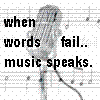FOURTH POSTING - SUMMARY OF AN ARTICLE
In this week’s task, we were required to read and summarize an article from our OTL book titled “beyond concordance lines: using concordance to investigate language development” by Arshad Abdul Samad from University Putra Malaysia (UPM). This posting was done with pair and my partner is Revathy.
This article highlights the importance of concordance and the benefit of using this software in analyzing language data on how words and grammatical constructions are used which proves to be very useful to teachers, students and also researchers.
According to Schmitt (2002:34), using a corpus in language learning language captures students in a whole new way instead of making them just memorizing rules of English, as what it has been done all this while. A lot of studies have been done regarding concordance and how it helps but the one that is discussed in detail in this chapter is EMAS corpus which was investigated by researchers from UPM, on language development using language production and lexical variety.
EMAS corpus was collected in 2002 and it consists of almost half a million words in the form essays written by 800 students from year 5, form 1 and form 4. Topics that were selected were based on the amount of language certain topics could take. This was why narration topics were taken because students were expected to write better based on the things that they were familiar with such as incidents at a river.
Various methods can be used to investigate the development of language. But however, here, the research was based on the assumption that development of language patterns can be seen from comparing language usage of 3 different age groups. The performance of students was valued from various aspects such as language productivity, range of vocabulary and sophistication of vocabulary.
If seen from the aspect of language productivity, it is indicated by the number of sentences per essay and words per sentence. The analysis showed a figure of gradual increase as the age group increases. Moving on to the other aspect which is from the range of vocabulary, it involves calculating the ratio by dividing the number of separate words in a text by the number of words in the text. A larger type of ratio shows a wider range of language inclusive of many uncommon words while a lower ratio shows the usage of limited set of words in English. As far as EMAS is concerned, type to token ratio gradually increased as the age group increased. But however, the increase was not a solid one; because of the type of essay that was given which was narration based which require constant reference to the same objects, thus bringing down the ratio.
A specialized software, example RANGE known as a vocabulary analysis program allows users to decide the complexity of the vocabulary. This software gives us further information on the type of vocabulary that is used. Text is compared with the base lists and frequently used words where the primary base list includes the most frequent 1000 words in and the secondary includes the second most frequent 1000 words in English. The tertiary includes the words that are not seen in the primary and secondary words. All the base focuses on the base and derived forms.
Talking on the EMAS sub corpus, data regarding this information has shown in a table form. Here, we can say that the there is an obvious increase in the complexity of vocabulary used. If we take a look closely to the data provided in the table, we can say a there were a large amount of words by 63.5% used by the primary students in the primary category whereas in the Form 1 and Form 5 category, the percentage of words being used is at 57.9% and 44.5% accordingly. The number obtained from this data clearly shows that there is a wider range of words are used. Not only that, the words used much more complex. Form 4 students on the other hand showed lower percentage in both categories. The number in the academic wise shows there were more academic familiarity among them.
In a nutshell, the use of a corpus in language teaching and learning mainly focuses on how it can actually be used. We cannot deny the fact that concordance software helps us to analyze the words in certain language text but when there is a huge amount of words available in a particular text, it is certainly not a very good idea to be made. The main thing that this article focuses on is to attempt the existence of corpus data in language development. The result that is within the data shows significant relationship in the terms of language production as well as the vocabulary. And apart from that, this corpus can also be analyzed to inform language educators of the language improvement. Practically, we can say that this corpus can be used to make a comparison in the future groups and also to review the language development in our country.
__________________________________________________________
APPLICATION OF CONCORDANCE IN CONTENT ANALYSIS
Welcome back! Now have you guys ever wonder how it would be if you were asked to analyze any kind of text that is extremely long by just looking at it? Going through all the words and then listing them out one by one for the analyzing process is not an easy task. Not only that, it is definitely takes loads of time and apart from that makes our life miserable! With the use of a concordancer, this task becomes easier. Concordancer is software that is used to make a concordance. Concordance in our opinion is meant by the listing of certain words in a row. Concordance makes it easier for us because it will only list down the words that we want in an alphabetical order. In addition, the words can be seen clearly without any complications.
There are numerous articles regarding to the subject of concordance in language learning. But one problem that we faced in the search of articles on the application of concordance is the language itself. Most of the articles are constructed in a complicated language of English, thus proving it difficult to understand concordance and the application of it in today’s world. However, we managed to come across an article that is written in simple English which can be understood by all. The concerning article is taken from http://www.bhashaindia.com/Patrons/LanguageTech/Textanalysis.aspx and gives a very good explanation on concordance starting from the basic.
According to this article, concordance is “an alphabetical list of the principal words used in a book or body of work, with their immediate contexts. That is finding and tabulating all the key words in a book or any large written work”. Based on this article too, utilizing concordance in a database brings a lot of easiness and comfort to the user because concordance software informs a user of many aspects of words and the usage of it in a text. For example, few of the uses of concordance are:
- Comparing the various functions of a word from different perspective.
- Analyzing key words.
- Finding out frequency of a word
- Analyzing phrases
- Improving vocabulary
- Translate a word from on language to another
This computer tool is called “Concordancer” whereby it creates database from any Text that is chosen to be concordance. This database is named “corpus”. Concordance is something that is best to be mastered by students especially language students due to the fact that Concordancer can provide many answers regarding the usage of any language in depth.
This article also highlights the definition of “text analysis”. It is defined as “analyzing the given data in form of text and retrieving the information needed by the system from it”. Among the aspect that can be analyzed are words and phrases.
According to another article from http://www-writing.berkeley.edu/TESL-EJ/ej36/m2.html by Roland Sussex from The University of Queensland, Australia, combination of concordance as well as other tools, QQ+Concordance, proves to be very useful in analyzing texts from “a to z” to students of language. Hereby, she says using concordance in analyzing texts is recommended because “concordancing software is able to extract from machine readable text not only words and phrases of raw data, but also tags which have been inserted into the raw text to identify different kinds of linguistic, pragmatic and other evidence.” Analyzing texts using concordance puts researchers and students in a position where they can familiarize themselves with computer and texting skills thus, being able to think critically and creatively about texts and how they work.
We chose to explain on the applications of concordancer in content analysis. Let us give you guys a brief information on what is understood by content analysis. Content analysis is also known as textual analysis. Content analysis has said to be used in the mid 1940’s. Content analysis is divided in to two forms conceptual analysis and the relational analysis. Conceptual analysis shows the number of words that is occurred within a text and then gets it recorded. Before getting into depth, one should clearly define the aspects before the counting takes place. The text should be coded or break down into convenient content categories. On the other hand, relational analysis builds on conceptual analysis by examining the relationships among concepts in a text. In this section, it is very crucial to first decide the concept that will be used throughout the analysis. In the process of identifying the words or phrases in that matter, there are few steps that you should take in order to get your work done systematically. One of it is to see which word is analyzed and how the word is used in the particular text.
Content analysis involves textual type of information and at the same time identifies the properties. In other words, it focuses on the basic form of certain words. Relationship between words and concepts are looked into depth, as in how does a word acts in the particular phrase. Texts that basically have writings on in it basically in letters, novels, transcripts of recorded communications - television shows, interviews, books, discussions and even newspapers. One way to conduct this content analysis is to break down those words in smaller forms which include words, phrases and also sentences. Let us explain briefly in this section.
There are few steps in the content analysis. The first thing that you should be doing is to describe the area that need to be studies, secondly select the media that will be used for the data either relational analysis or conditional analysis. Thirdly, choose the category and then count either the presence or absence of the particular category and after that place them accordingly into one category. The categories that have been inserted under one may have loads of data in it. Here, it is very impossible to count the whole thing. What you can and should be doing is that to decide on the sampling strategy before analyzing the data. In addition to that, please take note that you should be looking on the words that gets counted, the level of analysis that is used and the coding frames. Coding frames shows the occurrence of certain words in every 10 pages basically. Few examples on the elements that needs to be counted include items, words, phrases, sentences, paragraphs, semantics, concepts and also the themes.
Content analysis makes it easier for us because it analyses completely about the word. Not only that, it gives valuable ideas through analysis of texts. Due to the fact that it can be used in any type of writing, content analysis is used massively in large number of fields which includes marketing, media studies, literature and many more. Apart from that the frequency words used can also be identified in this content analysis. More information on how it works can be viewed at http://maxweber.hunter.cuny.edu/socio/kuechler/341/f95/caho.html. Content analysis is thus a very good way to analyze words, phrases or even sentences without having complications.











1 comments:
hey ya puvi!! just dropping by to say that i am very proud of our work here!! haha...partner in crime!
Post a Comment